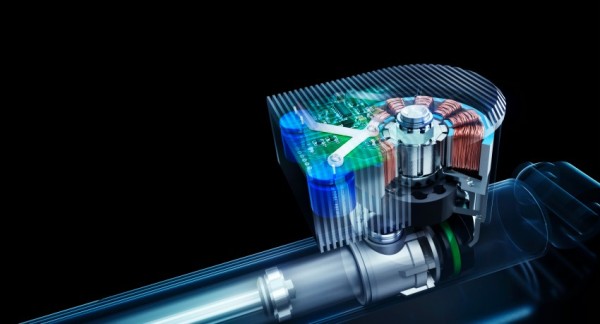Usually one thinks of regenerative braking or solar panels as ways to provide vehicles with on-board supplemental energy for various functions while the car is in use. Typically this means the energy collected from these processes going to power air conditioning or give electricity back to a hybrid’s battery. Other types of on-board systems are being studied as well for energy recuperation, and now two companies are teaming up to bring to market one such offering focused on “the world’s first fully active suspension system with energy recovery function.”
ZF, an automotive parts firm, and start up Levant Power, who developed the GenShock technology, are the two involved in this collaboration. Their idea is to eventually get into passenger cars a fully active suspension system that combines “dynamics, safety, and comfort characteristics with minimum energy consumption.” This system will have an “intelligent, simple design” that ultimately can be made cost effective for volume production. As for when that actually happens, no estimated date or potential automative partners were mentioned.

The technology, according to ZF’s Rolf Heinz Rüger, works something like this – a functional unit,
fitted to the outside of the ZF damper, forms the technological basis of the active, regenerative system. The valve technology has been developed specifically for this application. The very compact unit is composed of its own control unit, an electric motor, and an electrohydraulic gear pump. Driven by an electronically controlled electric motor, the gear pump regulates the oil flow in the damper. “For dynamics, comfort, and safety, it is essential that active forces can be applied into the chassis”, explains Rüger. For this reason, the damping characteristic curve does not only adapt optimally to each driving situation automatically; but also bodywork pitch motions during abrupt braking maneuvers and rolling motions during rapid evasion maneuvers are virtually eliminated. Moreover, the technology is capable of actively raising each individual wheel.
As soon as the driving situation permits, the innovative valve system automatically uses the swaying motion of the damper piston to recover energy. Then, the system guides the oil in the damper in such a way that it drives the electric pump motor. This then functions like a generator – it converts the kinetic energy generated into electricity and feeds it into the vehicle power supply, thus contributing to a reduction in CO2 emissions. This effect is most powerful when the vehicle is traveling on poor-quality country roads.
ZF seems to know a little something about adaptive dampers, as 2.2 million in 2011 alone were produced for some of its customers, including Alpina, Audi, Bentley, BMW, Ferrari, Maserati, Opel, Rolls-Royce, Mercedes-Benz, Porsche, and Volkswagen. While there’s no specific mention of this technology being used with green vehicles, it is reasonable to assume some of those auto manufacturers, along with the likes of Ford and Toyota, might consider it at least as an additional offering for their popular hybrids and electric cars to recharge the lithium-ion batteries.